Egypt Pompeii

© Ph. A.Chemollo | Allestimento mostra Egitto Pompei, Palestra Grande, Scavi di Pompei
From 20 April 2016 to 2 November 2016
Pompei | Naples
Place: Palestra Grande
Address: via Villa dei Misteri 2
Times: open every day from 20 April to 31 October from 9 am to 7.30 pm (last admission 6 pm) 1-2 November from 8.30 am to 5 pm (last admission at 3.30 pm) closed 1 May
Responsibles: Massimo Osanna, Marco Fabbri, con la collaborazione di Simon Connor
Organizers:
- Soprintendenza Pompei
- Museo Archeologico Nazionale di Napoli
- Fondazione Museo delle Antichità Egizie di Torino
Ticket price: full € 13, reduced € 7.50
Official site: http://mostraegittopompei.unclick.it
Egypt returns to Pompeii in a striking contemporary reinterpretation. From April 20 in the Great Palaestra the exhibition “Egypt Pompeii” will open to the public. This is the second location of the exhibition of the same name,which opened on March 5 last year at the Egyptian Museum in Turin, stemming from a collaboration between it, the Pompeii Superintendence and the National Archaeological Museum in Naples, with organization by Electa.
Three different venues will trace the encounter between cultures that were distant, but historically related and intimately connected, through the dialogue between Egyptian artifacts of the Pharaonic era and artworks of the Hellenistic-Republican and Imperial period that embraced and reinterpreted its imagery.
On the occasion of the exhibition at the Excavations of Pompeii, curated byMassimo Osanna and Marco Fabbri with Simon Connor, the recently restored spaces of the Great Palaestra will present the monumental statues of the New Kingdom (16th-11th century BC), the period of greatest splendor of Egyptian civilization. From Thebes, the principal religious center of the period, comes the magnificent seated statue of the Pharaoh Thutmose I (15thcentury BC), found in the temple of the god Amon at Karnak, together with theseven colossal statues of Sekhmet (14th century BC), the mysterious and disquieting Egyptian lion-headed goddess, whose power was both devastating and a dispenser of abundance.
The awesome granite sculptures – exceptional loans from the permanent collection of the Egyptian Museum enhanced by the spectacular installationby Francesco Venezia – bear extraordinary witness to the world of Egyptian mythology, as well as representing the power of the Pharaohs in the Eighteenth Dynasty.
Following in the footsteps of Isis and Egypt in Pompeii, the layout continues through the exhibition rooms, with a display of what are known as Aegyptiaca – the artifacts and relics of ancient Egypt used in Campania as amulets from the 8th century BC – and the enthralling original video installation by Studio Azzurro evoking the cultural, religious and economic exchanges between Pompeii and Egypt from the end of the 2nd century BC.
The visit concludes with fragments of frescoes from Pompeii depicting scenes on the Nile with pygmies and exotic animals, an anticipation of the paintings still preserved in the houses.
The exhibition layout includes the sculpture by Nunzio, Untitled (combustion on wood, 2015), the outcome of a collaboration launched by the Superintendence in order to foster relations between Pompeii and the contemporary world. An iconic symbol of contemporaneity which also creates unbroken ties with antiquity, the work, which opens the exhibition, investigates the expressive potential of the material and its relation with light and space.
Outside, in the archaeological area, an Egyptian itinerary unfolds: from theTemple of Isis, among the best preserved buildings in Pompeii, with an app dedicated to them, the numerous domus decorated with Egyptian-style motifs, like the House of the Pygmies, which will be open to the public for the first time after restoration in the Great Pompeii Project (GPP).
The Temple of Isis, in particular, is the subject of museological and multimedia installations under the plan of use of the GPP, with the reproduction of items of furniture, statues and frescoes that originally decorated the building, and with a video by Stefano Incerti, so recreating all the evocative power it had at the time when it was discovered.
On June 28, at the Archaeological Museum in Naples, the project will enter its third stage. A new section of the circuit of the permanent collections will open, with a particular focus on the Oriental cults and religions that passed from Egypt to Campania and from there spread to the rest of the peninsula.
The Egypt project follows the great exhibition on PompeiiandEurope, held in 2015 at the Museum in Naples and the Amphitheatre in Pompeii, a journey into the past which in 2017 will feature Greece in its relations with Pompeii, Campania and the Italic world. It will also present Greece fostering the memory and metaphysical yearnings of De Chirico and Savinio, the subjects of an exhibition at the Archaeological Museum of Naples. Then finally, in 2018, an exhibition will investigate and showcase Pompeii in its relations with Rome, in the years of the conquest and foundation of the empire.
SCARICA IL COMUNICATO IN PDF
COMMENTI

-
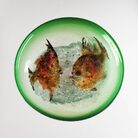 Dal 12 July 2025 al 24 November 2025
Venezia | Museo del Vetro
Dal 12 July 2025 al 24 November 2025
Venezia | Museo del Vetro
-
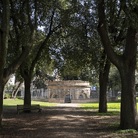 Dal 11 July 2025 al 21 September 2025
Roma | Loggia dei Vini - Villa Borghese
Dal 11 July 2025 al 21 September 2025
Roma | Loggia dei Vini - Villa Borghese
-
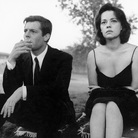 Dal 10 July 2025 al 10 August 2025
Roma | Palazzo Esposizioni Roma
Dal 10 July 2025 al 10 August 2025
Roma | Palazzo Esposizioni Roma
-
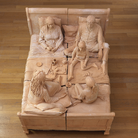 Dal 10 July 2025 al 3 November 2025
Casale Marittimo | Bolgheri, Castagneto Carducci, Casale Marittimo
Dal 10 July 2025 al 3 November 2025
Casale Marittimo | Bolgheri, Castagneto Carducci, Casale Marittimo
-
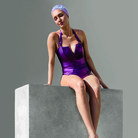 Dal 4 July 2025 al 21 September 2025
Roma | Palazzo Bonaparte
Dal 4 July 2025 al 21 September 2025
Roma | Palazzo Bonaparte
-
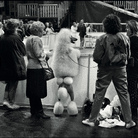 Dal 28 June 2025 al 21 September 2025
Roma | Palazzo Bonaparte
Dal 28 June 2025 al 21 September 2025
Roma | Palazzo Bonaparte


